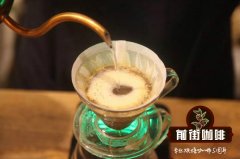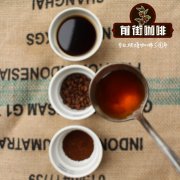How should I make geisha coffee by hand? Taste characteristics of geisha coffee source of geisha coffee

Professional coffee knowledge exchange more coffee bean information please follow the coffee workshop (Wechat official account cafe_style)
If you are a coffee fan, you are no stranger to geisha coffee.
If you are new to the world of boutique coffee, you should learn about this legendary coffee variety.
It's called Geisha Coffee (artist). Is it from Japan? In fact, this kind of coffee has nothing to do with Japanese geisha culture, just because this coffee variety was originally called what / artist, and its pronunciation is similar to that of Japanese geisha, so it is translated into geisha coffee. In China, it will be called Rose Summer Coffee.
Geisha coffee, originally a wild coffee variety grown in southwestern Ethiopia, was brought to a coffee estate in the Bork District of Panama in 1963. Because of its poor yield and high tree species, it was planted next to the coffee farm as a windbreak.
2004 was a year that changed the fate of geisha coffee.
In that year, in order to participate in the national coffee competition, the son of the coffee farm searched all the coffee trees in the estate to test, only to find geisha coffee by accident.
In the competition, Geisha won the championship with a strong and complex flavor, with one of the judges describing it as the Cup of God, and then winning the title for four consecutive years.
At the auction, geisha coffee also broke many records of high prices.
Compared with the typical Panamanian coffee flavor, geisha coffee is impressive in its distinctive features, full of jasmine aroma, acidity and sweetness of orange, lemon and honey, and clean and soft taste.
Slightly sour but not bitter, full of flower and fruit aroma, no wonder some people describe it as coffee that does not look like coffee.
Geisha coffee is a Tibica tree derived from Geisha, Ethiopia, and was introduced to Panama from Costa Rica in 1963, but no farmer is willing to grow it because of its low production capacity. It wasn't until two years ago that Daniel Peterson (Daniel Peterson) accidentally found the coffee on a farm. Panama is the only country that produces geisha coffee. At present, the two estates that produce geisha are Esmeralda Special Manor and Don pachi Manor, but the production of geisha is very rare.
After completing the four-game B.O.P., since 2008, Jade Manor has held its own single manor global online auction, the red bid known as "King of Geisha", which has attracted buyers of boutique coffee from all over the world. In July this year, at the auction, the Jade Manor sold a record high of US $601 per pound, and the auction price of Geisha coffee has increased more than 20-fold over the past 13 years.
Qianjie Coffee suggests baking geisha coffee to an explosion or so, so that it can retain its floral and fruit aroma, good citrus acidity, and rich layers.
Cup test features: very lush and delicate sweet flower aromas, especially jasmine and coffee flowers, with obvious lemon-lime citrus acidity. Rich fruit and light candy flavors. Soft, rich, delicate and light chocolate taste. A coffee with a distinct pedigree and very approachable.
Qianjie Coffee suggests using cake cups to increase the richness of geisha coffee, with citrus acidity and rose tea aromas.
Qianjie coffee: Guangzhou bakery, the store is small but a variety of beans, you can find a variety of unknown beans, but also provide online store services. Https://shop104210103.taobao.com
Important Notice :
前街咖啡 FrontStreet Coffee has moved to new addredd:
FrontStreet Coffee Address: 315,Donghua East Road,GuangZhou
Tel:020 38364473
- Prev

Panamanian Emerald Manor Geisha Coffee introduction what is the flavor of geisha coffee?
Professional Coffee knowledge Exchange more coffee bean information Please follow Coffee Workshop (Wechat official account cafe_style) Geisha, a wild coffee variety originally grown in southwestern Ethiopia, was brought to the coffee estate in Bok District of Panama in 1963. Due to poor yield and high tree species, geisha was planted next to the coffee farm as a windbreak. In 2004, it was a change.
- Next

Introduction of famous Peruvian Coffee Brand Chamayou Coffee beans-is the coffee tasty?
Professional coffee knowledge exchange more coffee bean information Please follow the coffee workshop (Wechat official account cafe_style) A cup of coffee that tells stories if pearls are the tears of a mermaid princess, coffee beans may be a jewel accidentally lost by God on earth. Peruvian coffee is grown in the valleys of the Andes at an altitude of 13501500 meters.
Related
- Detailed explanation of Jadeite planting Land in Panamanian Jadeite Manor introduction to the grading system of Jadeite competitive bidding, Red bid, Green bid and Rose Summer
- Story of Coffee planting in Brenka region of Costa Rica Stonehenge Manor anaerobic heavy honey treatment of flavor mouth
- What's on the barrel of Blue Mountain Coffee beans?
- Can American coffee also pull flowers? How to use hot American style to pull out a good-looking pattern?
- Can you make a cold extract with coffee beans? What is the right proportion for cold-extracted coffee formula?
- Indonesian PWN Gold Mandrine Coffee Origin Features Flavor How to Chong? Mandolin coffee is American.
- A brief introduction to the flavor characteristics of Brazilian yellow bourbon coffee beans
- What is the effect of different water quality on the flavor of cold-extracted coffee? What kind of water is best for brewing coffee?
- Why do you think of Rose Summer whenever you mention Panamanian coffee?
- Introduction to the characteristics of authentic blue mountain coffee bean producing areas? What is the CIB Coffee Authority in Jamaica?

